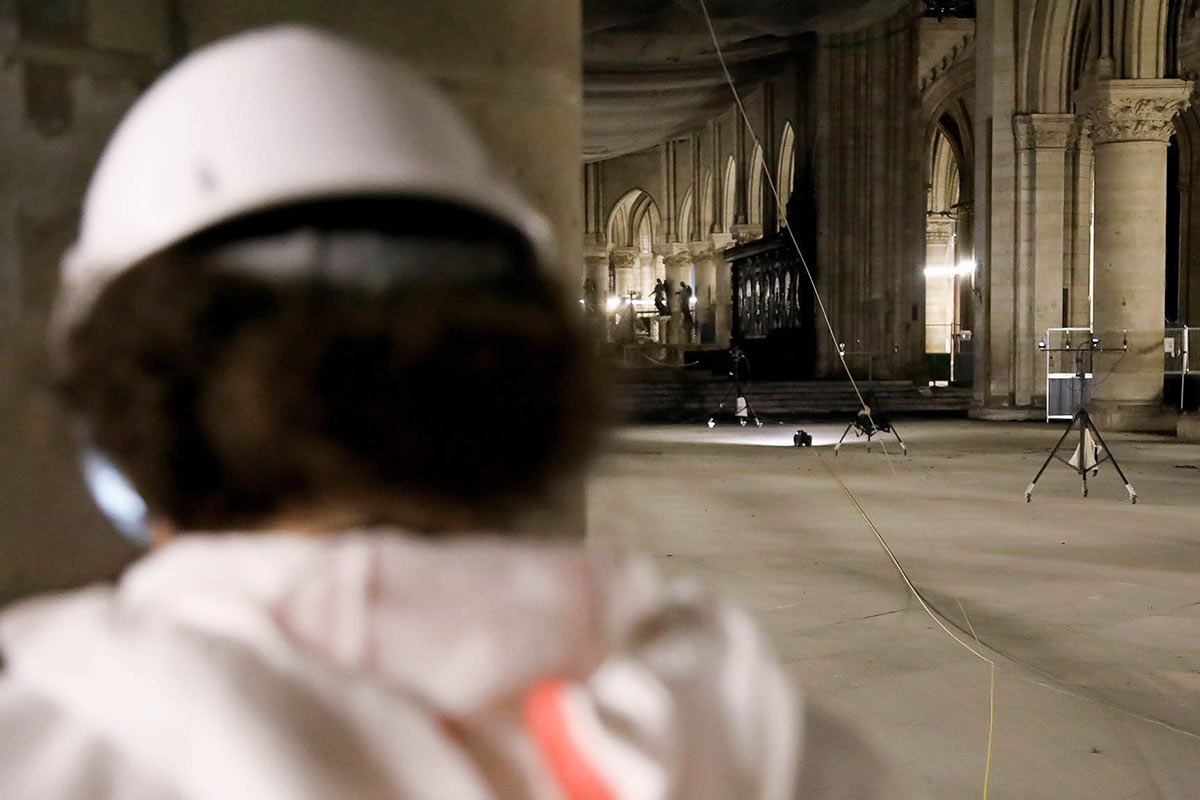Digital Extras
Our Digital Extras section brings you even more to explore — content you won’t find in the print edition. Enjoy extended photo galleries, exclusive videos, immersive 3D models and bonus stories.
Preserving the Sound of Notre-Dame
How do you preserve the sound of a sacred space? Go behind the scenes with Brian F.G. Katz ’90 as he captures the acoustics of an iconic cathedral.








These videos offer a rare glimpse inside the damaged cathedral. Follow along as Katz and his team of researchers record acoustic data after the fire.
In this hourlong “ArcheoConcert,” tour the sonic history of Notre-Dame from its earliest centuries. The film uses Katz’s virtual acoustic models of the building to re-create how it sounded during various eras. (Headphones recommended!)
A Digital Renaissance
Watch a video, explore a 3D model of a beloved old-world cello and see more photos that explain the work of computer scientist-turned-luthier Harry Mairson.








Getting Personal With Public Art
In late June, Denise Markonish ’97 becomes the Madison Square Park Conservancy’s chief curator. She arrives from the Massachusetts Museum of Contemporary Art (MASS MoCA), where she spent 18 years producing large-scale commissions by big-name artists, including the three featured below.



Excerpt From “Kill Talk”
In her new book, “Kill Talk: Language and Military Necropolitics” (Oxford University Press, 2025), anthropology professor Janet McIntosh explores how the U.S. military uses language specifically designed to teach combatants to “assimilate violence into their inner lives so they can willingly anticipate the act of killing and swallow the possibility of dying.”
Here is an excerpt from the book:
Night after night, the buses pull up on the tarmac outside the Recruit Processing Center at Parris Island Marine Corps recruit training center in South Carolina. Usually they are full of young men — still boys, by some measures — with a nervous feeling in the pit of their stomach. They will have sensed the air getting heavy and sticky, and they might have noticed a faint swampy smell. They’ve seen enough movies to know what comes next, but they still find it startling. A Drill Instructor (DI) storms the bus, shirt tight around his muscles, his belt seeming to float around his flat abdomen, roaring at the neophytes from under his circular hat brim.
“SIT UP STRAIGHT! From this point forward you will only answer me with a YES, sir, NO, sir, AYE-AYE, sir. DO WE UNDERSTAND?”
“YES, SIR!” yell the recruits.
“Now get OFF MY BUS! NOW NOW NOW!”
The young men hustle to plant themselves on a row of yellow footprints painted on the road. The yelling follows them, an acoustic assault, so thick and fast and strangely inflected that each recruit has to listen hard and use herd behavior to know what to do next.
They know they’re about to be transformed, but they are unlikely to recognize all the subterranean dynamics of this change and how the acoustic qualities of boot camp will demonstrate how to become a hardened killer. These qualities will also model the disintegration of their personhood and their necropolitical abjection — that is, their killability in the eyes of the state. But more immediate symbolism commands their attention. Those yellow footprints have awaited recruits since the early 1960s, and each assumes the same position, heels clicked neatly together, forcing the body to stand at attention as the DI paces back and forth barking declarations.
DIs have been through their initial speech many times, and it’s a performance of intimidation, not semantic clarity. Phrases like “United States Marine Corps” come out about twice as fast as they would in ordinary talk. DIs slur their syllables, swallow some words, and emphasize others erratically. Addling the listener seems to be part of the point. When I played back a recording (posted to YouTube in 2016 by a noncommissioned officer) three times over, I could discern the following:
YOU have just taken the first step to becoming a member of Americaʼs finest fighting force, the United States Marine Corps. YOU should be standing at a position of attention. That means your heels are touching. Your FEET are at a forty-five-degree angle. Your thumbs are on your trouser seam. Palms rolled inward. Fingers in their natural curl. Head and eyes straight in front. And your mouth is shut. Iʼll say it again: Your mouth is shut. Thatʼs the only position for which you should be a Marine [unintelligible] Depot. Do we understand. [The recruits yell “YES SIR!”] And do we understand. [“YES SIR!”]
The DI goes on to shout, in a rapid slur, that recruits are now subject to the Uniform Code of Military Justice. He threatens nonjudicial punishment or a court-martial for noncompliance. He shouts about Article 91, on “disrespect” not being tolerated, and Article 92, which states, “You will do what you’re told to, when you’re told to do it, without question.” Each speech segment ends with “Do we understand,” but it’s a rhetorical question. There’s no room to request clarification — only to perform affirmation in the loudest possible voice.
The arrival I’ve described is fairly typical, but every Marine Corps veteran will describe theirs a little differently. Some DIs bypass the longer speeches at the footprints, instead going up to individual recruits to scream in their ear, “GET ON THOSE YELLOW FOOTPRINTS! EYES FRONT! YOU! QUIT LOOKING AROUND!” Sometimes, two or three DIs stage a “shark attack,” swarming individual recruits while screaming at them to assume the “POA” — position of attention — before explaining what the acronym means. One Marine I spoke to described feeling “ripped off” when his bus was greeted by a female DI who was too distracted to give the tongue-lashing he expected; he had hoped for a more bracing, masculine experience. But the classic arrival slams recruits with language that assails and frustrates. There is no sign of anything like “conversation.” This is a rite of passage.




